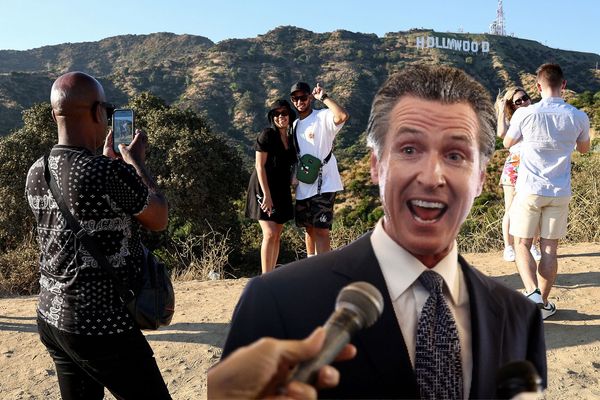
Coal- and gas-fired power plants could be paid to stay in business to bolster the stability of the main electricity grid and attract enough investment to build the equivalent of 50 times the original Snowy Hydro scheme by 2050, according to a high-level design paper released by the Energy Security Board.
The fossil fuel generators would be required even as Australia continues to decarbonise the electricity sector, the paper released on Monday said.
The report by the ESB backs payments for not just supplying power but also retaining the capacity to do so, as one of the most viable options to reform the faltering energy market after 2025.
It also recommends that states be able to pick technologies suited to their carbon-cutting ambitions, in a bid to mollify anticipated opposition from some regions to the inclusion of fossil fuel plants in a new capacity market. The imperative, though, would be to improve investor certainty and incentives to fund a major revamp of the market.
“Designed well, the capacity mechanism will enable a swifter, less risky and more orderly transition to a net zero emissions energy system,” the paper argues.
It says that to retain the “energy-only” market would risk future supply gaps, particularly if more ageing coal or gas units abruptly exit, such as Victoria’s Hazelwood coal plant did in 2017.
The timetable for the market overhaul was already tight, even before soaring energy prices, blackout threats in five states and the suspension of the wholesale electricity market.
The energy proposal will likely intensify the debate over whether a capacity market is needed – and how much it will cost consumers, who will ultimately pick up the tab.
The federal energy minister, Chris Bowen, wants to discuss the ESB’s proposal at a meeting next month with state and territory energy ministers. A final design plan is to be agreed on by February.
The trajectory for the national electricity market that Aemo sees as most likely has coal gone entirely by 2043. pic.twitter.com/e5RkVI9zZY
— Peter Hannam (@p_hannam) June 19, 2022
Bowen told the energy ministers meeting earlier this month that he “supported the principle of a capacity mechanism [while in opposition], provided it was consistent with net zero and encouraged new technology”.
Victoria and the ACT have explicitly opposed paying fossil fuel generators to stay open, and it remains to be seen whether they will accept the flexibility offered in the design plan as adequate in order to avoid them vetoing the changes.
However, with the threat of recurring energy crises over the next few months, state governments will be under increasing pressure to act – particularly Victoria, which will hold an election in November.
The electrification of transport, heavy industry and household heating adds to the urgency of building new electricity generation assets, the ESB said.
“Our electricity sector is undergoing a once-in-a-century transformation, as ageing fossil fuel generators are replaced by modern, clean energy sources,” the paper said.
In a statement to the media, the ESB said: “This transition needs to be carefully managed. The stakes have never been higher.”
According to the “step change” scenario that the Australian Energy Market Operator (Aemo) considers the most likely, the country will need about 122GW of new wind and solar, backed up by 45GW of new storage capacity, by 2050. It will also need 7GW of existing hydro and 9GW of gas-fired generation as all coal plants exit by 2043.
“The new capacity required over the next 28 years is more than seven times that built over a similar time frame since the [national energy market] commenced 24 years ago and around 50 times the amount built by the Snowy Hydroelectric Scheme,” the paper said.
It adds: “While 5GW of coal capacity has already announced it will close by 2030, as much as 14GW may become uneconomic by that time” – or one-third of the Nem’s existing readily dispatchable capacity. “Replacement would require the equivalent of another Snowy 2.0 [pumped hydro plant] to be connected every year from now until 2030.”
How the capacity additions to the NEM have changed since its inception in 1998. Interesting too to show new renewables projects have lately stalled. pic.twitter.com/99TpDer84J
— Peter Hannam (@p_hannam) June 19, 2022
The ESB – made up of Aemo, the Australian Energy Regulator and the Australian Energy Markets Commission – indicated it backed a capacity market, based on the market in the UK. Aemo would control the market and hold twice-yearly auctions.
The ESB argued keeping some existing capacity would allow for “the most efficient mix of resources to ensure reliability, avoid over-building new capacity before it is required [and] discourage premature exit of existing capacity before alternative resources are in place”. It favoured “technological neutrality”, rather than picking winners.
The final design of the market could allow for some jurisdictions, like Victoria, to exclude fossil fuel generators from being eligible to receive revenue from the capacity mechanism.
“Any emissions reduction guidance and operationalisation in the capacity mechanism will not alter, or limit, the principle that jurisdictions must be able to determine which technologies are eligible for participation in a capacity mechanism in their region,” the paper said.
It added that since new power lines will be required to support the expansion of renewables and allow regions to better meet demand elsewhere in the grid, any new scheme should include payments to help expedite transmission projects.
Submissions are open until 25 July. The ESB will put its final recommendations to the minister by the end of the year.







